Table of Contents
Come join us now, and enjoy playing your beloved music and browse through great scores of every level and styles!
Can’t find the songbook you’re looking for? Please, email us at: sheetmusiclibrarypdf@gmail.com We’d like to help you!
Coldplay – Viva la Vida (Easy Piano) sheet music, Noten, partitura, spartiti, 楽譜, 乐谱
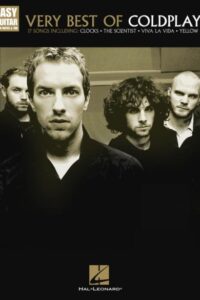
Best Sheet Music download from our Library.

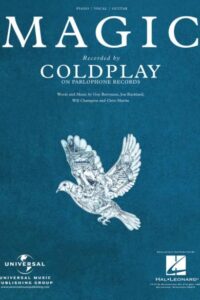

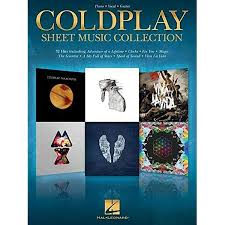
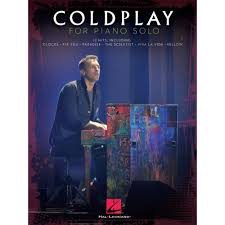
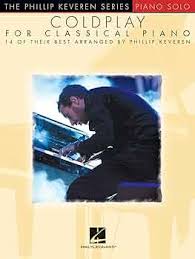
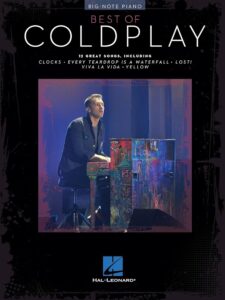

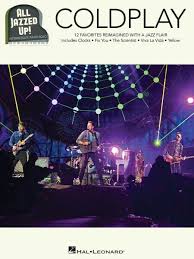

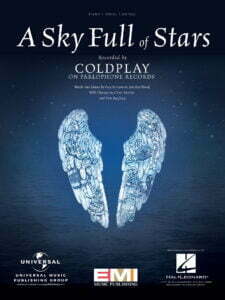

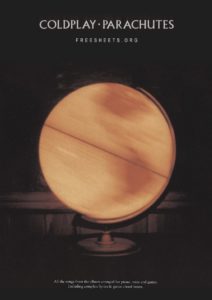
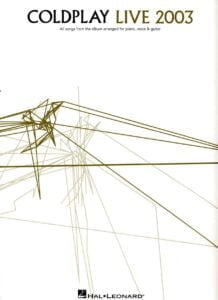
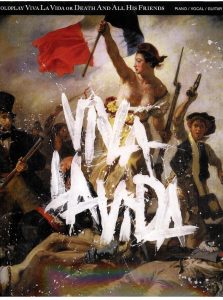



Please, subscribe to our Library.
If you are already a subscriber, please, check our NEW SCORES’ page every month for new sheet music. THANK YOU!
Browse in the Library:
Or browse in the categories menus & download the Library Catalog PDF:
Coldplay: Architects of Heartfelt Anthems – A Comprehensive Exploration
Emerging from the halls of University College London in the late 1990s, Coldplay evolved from humble student beginnings into one of the most ubiquitous and commercially successful rock bands of the 21st century. Their journey is one of soaring melodies, introspective lyrics, meticulously crafted soundscapes, and an unwavering pursuit of emotional connection, often sparking both fervent adoration and critical debate. This exhaustive exploration delves into their biography, musical evolution, harmonic language, influences, legacy, extensive works, and cultural impact.
I. Biography: From “Starfish” to Superstars
- Formation and Early Struggles (1996-1999): The core of Coldplay coalesced around Chris Martin (vocals, piano, guitar) and Jonny Buckland (lead guitar), meeting during Freshers’ Week at UCL in September 1996. Bassist Guy Berryman joined soon after, and drummer Will Champion, despite initially learning the instrument for the band, completed the lineup by early 1998. Originally named “Starfish,” they played small London venues, honing their sound and building a local following. Manager Phil Harvey, Martin’s close friend from university, became the unofficial “fifth member,” guiding their early career. A pivotal moment came with the self-funded release of the Safety EP in 1998, leading to a deal with indie label Fierce Panda for the Brothers & Sisters EP (1999), which garnered critical attention and radio play for the track “Bigger Stronger.”
- Breakthrough: Parachutes (2000-2001): Signing with Parlophone (EMI) in early 1999, they released the The Blue Room EP later that year. Their debut album, Parachutes, arrived in July 2000. Defined by its intimate, melancholic beauty, jangly guitars, Martin’s distinctive falsetto, and piano-driven ballads, it was an instant critical and commercial success. The global smash “Yellow” became an anthem, propelling the album to win the Grammy for Best Alternative Music Album in 2002. Coldplay had arrived on the world stage.
- Global Stardom: A Rush of Blood to the Head & X&Y (2002-2005): Their sophomore effort, A Rush of Blood to the Head (2002), cemented their status. A bolder, more expansive record featuring classics like “Clocks,” “The Scientist,” and “In My Place,” it showcased their growing ambition and songwriting prowess, winning multiple Grammys. The subsequent X&Y (2005), while commercially massive (topping charts globally), saw the band grappling with the pressures of fame. Tracks like “Fix You” and “Speed of Sound” were huge hits, but some critics felt it tread familiar ground. This period established their reputation for anthemic, emotionally resonant rock.
- Artistic Experimentation: Viva la Vida or Death and All His Friends & Mylo Xyloto (2008-2011): Seeking reinvention, they collaborated extensively with producer Brian Eno on Viva la Vida or Death and All His Friends (2008). The result was a vibrant, eclectic masterpiece. Baroque pop influences, string sections (courtesy of Davide Rossi), world music textures, and cryptic lyrics marked a dramatic shift. The title track (featuring the iconic “I used to rule the world…” line) and “Violet Hill” became global phenomena, winning multiple Grammys, including Song of the Year for “Viva la Vida.” They continued the colorful, conceptual approach with the dystopian love story Mylo Xyloto (2011), their first #1 album in the US. Featuring Rihanna on “Princess of China,” it embraced synth-pop and electronic elements more fully.
- Refinement and Introspection: Ghost Stories & A Head Full of Dreams (2014-2015): Following Martin’s separation from Gwyneth Paltrow, Ghost Stories (2014) presented a stark contrast – a sparse, intimate, and deeply melancholic electronic-tinged album exploring heartbreak and loss (“Magic,” “Midnight”). While less commercially explosive, it was a critical success. They then pivoted sharply to the vibrant, optimistic, and kaleidoscopic A Head Full of Dreams (2015), co-produced with Stargate. Featuring guest appearances (Beyoncé, Noel Gallagher, Tove Lo) and a return to big anthems (“Adventure of a Lifetime,” “Hymn for the Weekend”), it felt like a celebratory counterpart to Ghost Stories.
- Cosmic Pop and Everyday Life: Everyday Life & Music of the Spheres (2019-Present): Everyday Life (2019) was a surprise double album, eclectic and politically charged, exploring global issues, faith, and social injustice (“Orphans,” “Arabesque,” “Everyday Life”). It showcased their willingness to experiment outside commercial constraints. Their most recent studio album, Music of the Spheres (2021), embraced a full-blown cosmic pop concept, featuring collaborations with BTS (“My Universe”) and Selena Gomez (“Let Somebody Go”). Characterized by its interstellar theme, maximalist production (often co-produced with Max Martin), and emphasis on universal connection, it spawned their massive, record-breaking “Music of the Spheres World Tour,” one of the highest-grossing tours of all time.
Throughout, the core lineup of Martin, Buckland, Berryman, and Champion has remained remarkably stable, a testament to their strong friendship and collaborative spirit. Phil Harvey continues as Creative Director.
II. Music Style: Evolution of an Anthemic Sound
Coldplay’s musical style is a constantly evolving tapestry, woven from diverse threads:
- Foundations (Parachutes): Rooted in Britpop melancholy (Travis, early Radiohead) and post-Britpop introspection, characterized by:
- Acoustic and clean electric guitars (jangly Rickenbacker tones).
- Prominent, often melancholic piano melodies.
- Chris Martin’s emotive vocals, frequently employing falsetto.
- Relatively simple, driving drum patterns.
- Understated bass lines.
- Lyrical themes of love, doubt, longing, and small triumphs.
- Expansion and Arena Rock (A Rush of Blood, X&Y): Incorporation of:
- Larger sonic landscapes: Bigger guitar sounds, more prominent drums, layered keyboards.
- Piano-driven anthems: Songs built around powerful piano motifs (“Clocks,” “The Scientist,” “Fix You”).
- U2 Influence: Soaring guitar textures (Buckland’s Edge-inspired delay and reverb), anthemic choruses, and themes seeking connection and meaning. The “big” Coldplay sound crystallized here.
- Artistic Exploration (Viva la Vida, Mylo Xyloto):
- Baroque Pop: Harpsichords, string sections, unconventional percussion (timpani, marching drums).
- World Music Textures: Incorporation of global rhythms and instrumentation.
- Art Rock/Prog Influences: More complex structures, thematic concepts, sonic experimentation (Eno’s influence).
- Synth-Pop/Electronic: Increased use of synthesizers, sequencers, and electronic beats, becoming dominant on Mylo Xyloto.
- Electronic Intimacy and Maximalism (Ghost Stories, A Head Full of Dreams, Music of the Spheres):
- Ambient/Electronic: Ghost Stories delved into atmospheric synths, programmed beats, and minimalist textures.
- Pop Maximalism: A Head Full of Dreams and especially Music of the Spheres embraced bright, saturated synth sounds, danceable rhythms, huge pop choruses, and features from contemporary pop stars.
- Soul and R&B Influences: More pronounced in vocal delivery and rhythmic feel on later albums.
- Eclectic Experimentation (Everyday Life): A deliberate step away from pop maximalism, incorporating:
- Gospel: Choral arrangements (“BrokEn,” “When I Need a Friend”).
- Blues/Rock: Grittier guitar work (“Arabesque”).
- Folk: Acoustic simplicity (“Cry Cry Cry,” “Old Friends”).
- Orchestral Elements: Prominent strings and brass.
Core Constants: Despite evolution, key elements persist:
- Melody First: Unforgettable, often soaring vocal and instrumental melodies are paramount.
- Emotional Resonance: Music designed to evoke strong feelings – hope, melancholy, joy, catharsis.
- Anthemic Quality: A knack for crafting choruses that feel universal and communal, often building to a powerful climax.
- Chris Martin’s Vocals: Instantly recognizable, ranging from vulnerable whisper to powerful falsetto and earnest chest voice.
- Lush Harmonies: Vocal harmonies (often featuring Champion and Berryman) and rich instrumental layering are signature traits.
- Accessibility: Even at their most experimental, their music retains a core pop accessibility.
III. Improvisational Licks and Guitar/Piano Approaches
Coldplay is not primarily known for extended improvisation like a jam band. Their strength lies in composition and arrangement. However, improvisation exists within specific contexts:
- Jonny Buckland’s Guitar:
- Live Embellishments: Buckland often subtly varies his parts live, adding extra fills, altering delay/reverb textures, or extending solos slightly within the song’s structure (e.g., adding extra flourishes to the “Viva la Vida” riff outro or extending the “Fix You” guitar solo climax).
- Textural Improvisation: His approach is often about creating atmosphere and texture rather than blistering solos. He might improvise subtle feedback swells, ambient noise, or variations on his signature delay patterns within sections.
- Signature Licks: His style is defined by:
- Economy: Often plays simple, memorable melodic fragments.
- Delay and Reverb: Creates vast sonic spaces using delay pedals (like the Line 6 DL4) and reverb. The repeating, cascading delay lines are a hallmark (heard clearly in “Talk,” “Square One,” the intro to “Speed of Sound”).
- Arpeggios: Clean, chiming arpeggios are frequent (“Clocks” is the quintessential example).
- Single-Note Melodies: Often plays poignant, melodic single-note lines that counterpoint Martin’s vocals or piano (“The Scientist,” “Warning Sign”).
- Textural Riffs: Creates riffs based on texture and rhythm as much as melody (“God Put a Smile upon Your Face,” “Violet Hill”).
- Chris Martin’s Piano:
- Live Variations: Martin frequently improvises piano introductions, outros, or subtle variations in the main piano figures during live performances. He might extend a prelude to “Clocks” or add different passing chords in “The Scientist.”
- Vocal Improvisation: More common is Martin’s vocal improvisation, adding ad-libs, extending notes, or varying melodic phrasing, especially during emotional peaks in live shows.
- Signature Style: His piano playing is:
- Rhythmic: Often provides a driving rhythmic foundation, especially in earlier work (“Clocks,” “Speed of Sound”).
- Arpeggiated: Relies heavily on broken chords and arpeggios to create movement and atmosphere.
- Chordal: Builds songs around strong, often suspended chord progressions (see Harmony section).
- Melodic Counterpoint: Frequently plays melodic counter-melodies to his own vocal line.
IV. Chord Progressions and Music Harmony: The Emotional Engine
Coldplay’s harmonic language is a cornerstone of their emotional impact. They favor accessible progressions often infused with specific colors and tensions:
- The Power of Diatonicism and Simplicity: Many hits use straightforward diatonic progressions (chords within the key), making them instantly relatable:
- I-V-vi-IV: The “Axis of Awesome” progression. Found everywhere in pop, and Coldplay uses it masterfully: “Don’t Panic” (Bm-D-A-G), “The Scientist” (C-G-Am-F), “Fix You” (C-G-Am-F), “Viva la Vida” (C D G Em – essentially I-II-V-vi).
- vi-IV-I-V: Another pop staple: “Yellow” (Bm-G-D-A), “In My Place” (Am-F-C-G).
- I-V-vi-iii-IV: Slightly more complex but still diatonic, used in “Clocks” (Eb-Bb-Cm-Gm-Ab).
- Suspended Chords (Sus2, Sus4): A DEFINING characteristic. These chords replace the third (which defines major/minor) with the second or fourth, creating ambiguity, openness, tension, and yearning:
- Csus2, Gsus2, Dsus2, Asus2: Ubiquitous. Creates their signature “open,” airy, hopeful, yet unresolved sound. Heard constantly in intros, verses, and choruses (“Yellow” intro riff – G Dsus2, “Clocks” main riff – Eb Bbsus2, “Fix You” verse – C Csus2, “Viva la Vida” strings – Csus2, “Paradise” intro – Fsus2).
- Modal Mixture (Borrowing Chords): Borrowing chords from parallel minor/major scales adds color and poignancy:
- ♭VII in a Major Key: A common rock device, adding a bluesy or anthemic feel. Used in “God Put a Smile upon Your Face” (Key of D: uses C major – ♭VII), “Violet Hill” (Key of E minor: uses D major – ♭VII relative to minor, also common).
- iv in a Major Key: Borrowing the minor iv chord adds deep melancholy. Central to “The Scientist” (Key of C: uses Fm – iv).
- Pedal Points: Sustaining a single note (often the bass note) under changing harmonies creates tension and drive:
- “Clocks”: The iconic repeating Eb bass note under the changing chords (Eb, Bbsus2, Cm, Gm, Ab).
- “Speed of Sound”: Driving synth bass pedal point.
- Inversions and Bass Movement: Careful attention to bass movement creates smoothness and interesting harmonic motion, even with simple chords.
- Modulations (Key Changes): Often used for dramatic effect, lifting the song to a new emotional plane:
- Step-Up Modulations: Common in final choruses (“Fix You” – C major to D major, “Viva la Vida” – C major to D major).
- Relative Major/Minor Shifts: Exploiting the close relationship between keys (e.g., C Major and A Minor).
- Secondary Dominants: Used occasionally for stronger motion towards a chord outside the tonic, adding a touch of sophistication (“A Rush of Blood to the Head” verse progression).
- Harmonic Rhythm: Varies effectively. Verses might have slower chord changes focusing on mood, while choruses often use faster harmonic rhythm to build energy and momentum.
Their harmonic genius lies in using relatively simple building blocks (diatonic progressions, sus chords) and arranging them with impeccable taste, lush textures, and perfect dynamics to create profound emotional resonance.
V. Influences: Roots and Branches
Coldplay’s sound is a confluence of diverse influences:
- Early Inspirations: Travis (The Man Who was a blueprint for Parachutes), Radiohead (The Bends era), U2 (guitar textures, anthemic scope, social conscience), Jeff Buckley (vocal vulnerability, emotional intensity), Bob Dylan (lyrical storytelling), Neil Young (simplicity, earnestness), Pink Floyd (atmospherics, conceptual ambition).
- Art Rock/Experimental: Brian Eno (production philosophy, ambient textures, embracing chance – a huge influence on Viva onwards), David Bowie (reinvention, theatricality), Arcade Fire (grandiose arrangements, communal energy).
- Pop Sensibility: The Beatles (melody, harmony, studio experimentation), ABBA (catchiness, vocal arrangements), contemporary pop producers (Max Martin, Stargate – influencing later albums).
- Electronic Music: Kraftwerk, ambient pioneers, later electronic dance music (influencing Mylo Xyloto, A Head Full of Dreams, Music of the Spheres).
- World Music: Explored more explicitly on Viva la Vida and Everyday Life.
VI. Legacy: Ubiquity, Impact, and the Critique
Coldplay’s legacy is immense and complex:
- Commercial Juggernaut: One of the best-selling bands of all time, with over 100 million records sold. Countless #1 albums and singles globally. Record-breaking tours.
- Defining 21st Century Rock/Pop: Alongside bands like U2 and Radiohead, they shaped the sound of mainstream alternative rock and pop in the 2000s and 2010s. Their anthemic style became a template.
- Emotional Soundtrack: Their music provides a shared emotional language for millions globally – soundtracks for love, loss, hope, and celebration. Songs like “Fix You,” “The Scientist,” and “Viva la Vida” are modern standards.
- Live Spectacle: Renowned for innovative, visually stunning, and emotionally charged live shows, incorporating elaborate stage designs, wristbands creating light shows, and a powerful sense of communal experience.
- Accessibility: Successfully bridged the gap between alternative credibility and massive mainstream pop appeal.
- The Critique: They face persistent criticism:
- “Bland” or “Safe”: Accusations of formulaic songwriting, overly earnest lyrics, and prioritizing universal appeal over artistic edge, especially post-Viva.
- “Sellouts”: Criticism intensified with their embrace of pure pop, high-profile collaborations, and corporate sponsorships on later tours.
- Lack of “Cool”: Often dismissed by indie purists and critics seeking more challenging or abrasive music.
- Artistic Evolution: Despite criticism, their willingness to experiment (Viva, Ghost Stories, Everyday Life) demonstrates artistic ambition, even if not always universally lauded.
- Cultural Impact: Beyond music, they are known for philanthropy (supporting various charities, particularly Oxfam and Fair Trade) and environmental advocacy (sustainable touring initiatives).
VII. Works & Filmography: Beyond the Albums
- EPs: Crucial early releases: Safety (1998), Brothers & Sisters (1999), The Blue Room (1999), Acoustic (2000), Remixes (2003), Prospekt’s March (2008 – Viva era outtakes), Kaleidoscope (2017 – AHFOD era extras), Global Citizen – EP 1 (2018).
- Live Albums: Live 2003 (CD/DVD), LeftRightLeftRightLeft (2009 – free download), Live 2012 (CD/DVD/Blu-ray – Mylo tour), Ghost Stories Live 2014 (DVD/Blu-ray), A Head Full of Dreams (Film – 2018, documenting the tour).
- Filmography (Music & Appearances):
- Live 2003 (Concert Film)
- Coldplay: The Hardest Part (Making-of documentary, 2006)
- Live 2012 (Concert Film)
- Ghost Stories Live 2014 (Concert Film)
- A Head Full of Dreams (Concert Film/Tour Documentary, 2018)
- Coldplay: A Sky Full of Stars (Live in Cinemas, 2014)
- Numerous TV performances (SNL, Jools Holland, Glastonbury broadcasts).
- Soundtrack Contributions: “Til Kingdom Come” (Garden State), “Life in Technicolor ii” (The Twilight Saga: New Moon), “Atlas” (The Hunger Games: Catching Fire), “Miracles” (Unbroken), “A Sky Full of Stars” (The Fault in Our Stars trailer), “O” (The Theory of Everything), “Amazing Day” (BFG trailer), “Orphans” (Military Wives), “Coloratura” (Lightyear trailer). Chris Martin co-wrote “Gravity” for Embrace (featured in Eternal Sunshine of the Spotless Mind).
- Collaborations: Extensive work with other artists, including Rihanna (“Princess of China”), Beyoncé (“Hymn for the Weekend”), The Chainsmokers (“Something Just Like This”), BTS (“My Universe”), Selena Gomez (“Let Somebody Go”), Avicii (“A Sky Full of Stars”), Jay-Z (“Lost+”).
VIII. Discography: A Journey Through Sound
- Parachutes (2000): Intimate, melancholic Britpop-infused rock. Key Tracks: Yellow, Shiver, Trouble, Don’t Panic.
- A Rush of Blood to the Head (2002): Confident, expansive, piano-driven anthemic rock. Key Tracks: Clocks, The Scientist, In My Place, Politik.
- X&Y (2005): Cinematic, atmospheric, grappling with scale and fame. Key Tracks: Fix You, Speed of Sound, Talk, Square One.
- Viva la Vida or Death and All His Friends (2008): Eclectic, baroque-pop masterpiece, artistic reinvention. Key Tracks: Viva la Vida, Violet Hill, Lost!, Strawberry Swing, Lovers in Japan.
- Mylo Xyloto (2011): Colorful, synth-pop/rock concept album. Key Tracks: Paradise, Every Teardrop Is a Waterfall, Charlie Brown, Princess of China (ft. Rihanna).
- Ghost Stories (2014): Sparse, intimate, electronic-tinged heartbreak album. Key Tracks: Magic, Midnight, A Sky Full of Stars, True Love.
- A Head Full of Dreams (2015): Vibrant, optimistic, kaleidoscopic pop. Key Tracks: Adventure of a Lifetime, Hymn for the Weekend (ft. Beyoncé), Up&Up, Everglow.
- Everyday Life (2019): Eclectic, socially conscious double album. Key Tracks: Orphans, Arabesque, Champion of the World, Everyday Life.
- Music of the Spheres (2021): Maximalist, cosmic-themed synth-pop. Key Tracks: My Universe (ft. BTS), Higher Power, Coloratura, Let Somebody Go (ft. Selena Gomez).
IX. Most Known Compositions and Performances
- Iconic Songs:
- Yellow
- Clocks
- The Scientist
- Fix You
- Viva la Vida
- Paradise
- A Sky Full of Stars
- Adventure of a Lifetime
- Hymn for the Weekend
- My Universe
- Speed of Sound
- In My Place
- Trouble
- God Put a Smile upon Your Face
- Every Teardrop Is a Waterfall
- Legendary Performances:
- Glastonbury 2002: A breakout performance cementing their headliner status.
- Live Aid 2005: Powerful rendition of “Fix You” at the charity event.
- Grammy Performances: Numerous memorable appearances, especially the 2003 performance of “Clocks” and the 2009 string-laden “Viva la Vida”/”Lost!” medley.
- Super Bowl 50 Halftime Show (2016): A vibrant, guest-filled spectacle featuring Beyoncé and Bruno Mars.
- Glastonbury 2016: Triumphant headline return, widely praised as one of the festival’s best sets.
- Music of the Spheres World Tour (2022-2024): A technologically astonishing, record-breaking stadium tour emphasizing sustainability and inclusivity, featuring kinetic floors, confetti cannons, and the signature LED wristbands creating vast seas of light.
Coldplay: The Enduring Resonance
Coldplay’s journey is a testament to the power of melody, emotional honesty, and ambitious production. From the fragile beauty of “Yellow” to the cosmic pop of “My Universe,” they have consistently sought to connect with audiences on a massive scale through music that aims straight for the heart. While navigating the pitfalls of immense fame and enduring critical skepticism, they have remained remarkably cohesive, continually evolving their sound while retaining their core identity. Their legacy is undeniable: they are the purveyors of modern anthems, masters of atmospheric soundscapes, and creators of a shared emotional experience for a global audience. Whether viewed as the ultimate populists or genuine musical alchemists, Coldplay’s impact on the landscape of 21st-century music is profound and enduring.
Browse in the Library:
Or browse in the categories menus & download the Library Catalog PDF:
